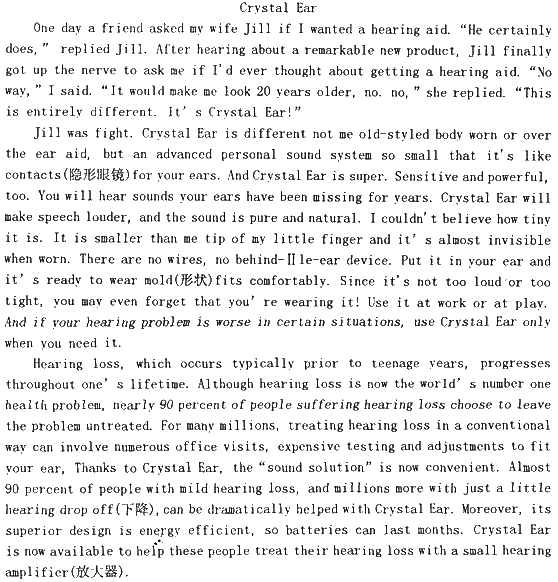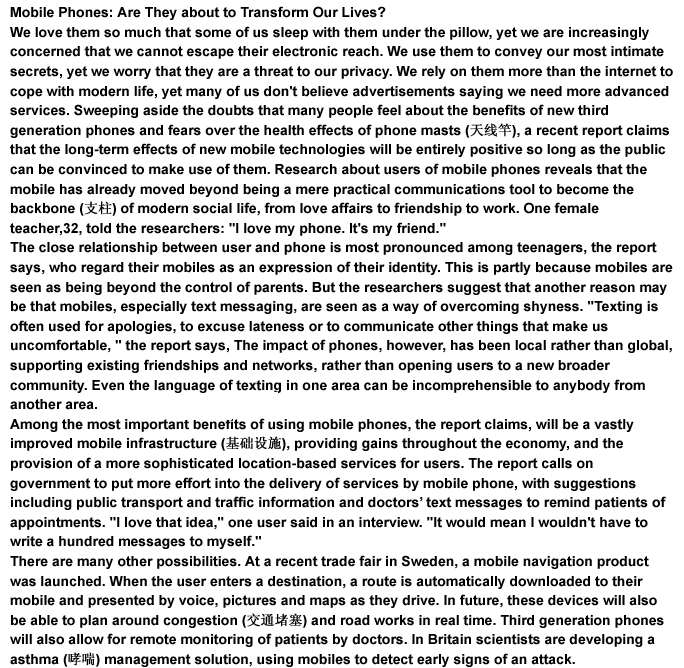Passage Four:Questions 66 to 70 are based on the following passage.Psychologists take oppo
sing views of how external rewards, from warm praise to cold cash, affect motivation and creativity. Behaviorists, who study the relation between actions and their consequences, argue that rewards can improve performance at work and school. Cognitive (认知学派的) researchers, who study various aspects of mental life, maintain that rewards often destroy creativity by encouraging dependence on approval and gifts from others.
The latter view has gained many supporters, especially among educators. But the careful use of small monetary (金钱的) rewards sparks creativity in grade-school children, suggesting that properly presented inducements (刺激) indeed aid inventiveness, according to a study in the June Journal of Personality and Social Psychology.
“If kids know they’re working for a reward and can focus on a relatively challenging task, they show the most creativity,” says Robert Eisenberger of the University of Delaware in Newark. “But it’s easy to kill creativity by giving rewards for poor performance or creating too much anticipation for rewards.”
A teacher who continually draws attention to rewards or who hands out high grades for ordinary achievement ends up with uninspired students, Eisenberger holds. As an example of the latter point, he notes growing efforts at major universities to tighten grading standards and restore failing grades.
In earlier grades, the use of so-called token economies, in which students handle challenging problems and receive performance-based points toward valued rewards, shows promise in raising effort and creativity, the Delaware psychologist claims.
第66题:Psychologists are divided with regard to their attitudes toward ________.
A) the choice between spiritual encouragement and monetary rewards
B) the amount of monetary rewards for student’ creativity
C) the study of relationship between actions and their consequences
D) the effects of external rewards on students’ performance
 题目内容
(请给出正确答案)
题目内容
(请给出正确答案)
 如果结果不匹配,请 联系老师 获取答案
如果结果不匹配,请 联系老师 获取答案


 更多“第3篇 Attitudes to AIDS Now Most…”相关的问题
更多“第3篇 Attitudes to AIDS Now Most…”相关的问题





















